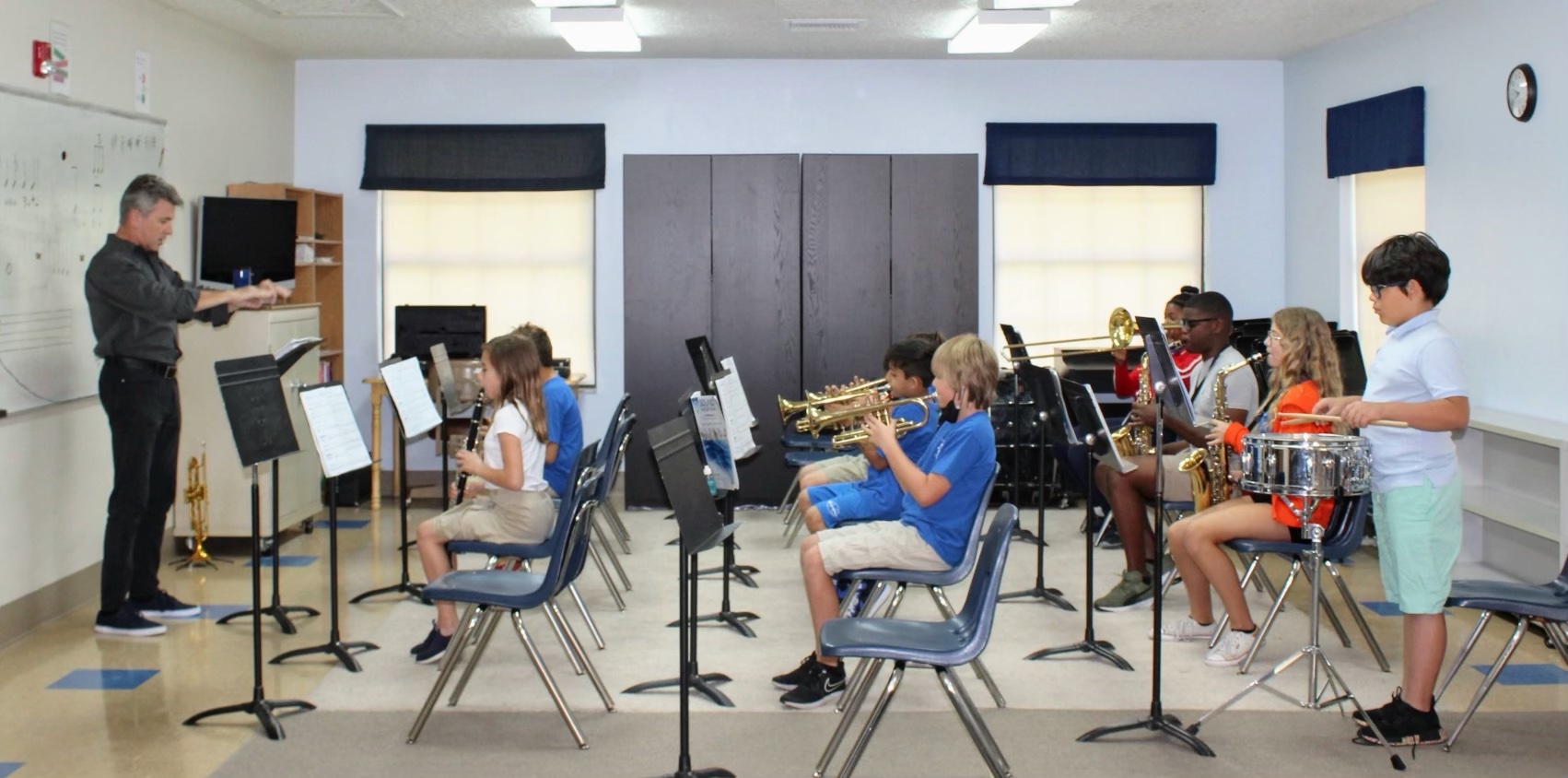Arts
The Human hand allows the mind to reveal itself. – Maria Montessori
Visual Arts
The visual arts program at Tuskawilla Montessori spans a wide range of mediums and is interspersed within the lessons and the Montessori materials. Artwork is immersive and embedded within our Montessori goals: to improve the child’s dexterity, concentration, fine motor skills, hand and finger strength, and coordination.
Our emphasis in the Preschool revolves around the process, not a finished masterpiece. The child’s artwork is more a reflection of self-expression than a full production.
Art in the Lower Elementary begins a shift where the child is more concerned about a final masterpiece. New mediums are introduced to expand the creative potential for this age group where self expression is still important, but also takes on a form of student satisfaction with the art.
The Upper Elementary and Middle School experience with art is more intense, with exploration and creation being focused within projects that students are creating. Art is often incorporated with history, culture and science tying it into the broader world.
Theater
Theater at TMA is another oppurtunity for students to gain new skills, talents and self-exspression. In addition to the actors, student’s participate in costume design, props and the set, sound systems, the playbill.
Music
Music classes for grades 1, 2 and 3 occur each week. There is a music class for each grade. The emphasis is to enjoy music and have fun with the many different aspects of music.
Each grade has an element of Voice, Instrumentation, Movement and Theory during every music class, with the first graders at a very basic level, and progressing into a more advanced level with the third graders.

Contact Us
Do you have a question? or maybe you would like a tour of our campus? Just send us a message and we will be in touch shortly with your information.
Voice
Students sing a mixture of simple but fun songs, progressing to more complicated songs in rounds and canons, which require concentration, teamwork and singing at the correct pitch. The piano is played to accompany their songs.
Instruments
Students play a variety of instruments like shakers and drums and sticks, learning to copy different rhythms, and taking turns to play in groups. The bells introduce a musical keyboard, where they learn how to strike the keys on the bells with a mallet, how to find well known songs by ear, how to transpose a song to a different key, and how to coordinate using one hand to play a harmony with the other hand to play the melody. They learn how to play a variety of graded songs on a recorder, which requires being able to read the music as well as playing by ear, but correct rhythm and notes are important.
Body Movement
A short selection of recorded music is played each week. Students listen and let their bodies respond by moving to the feel of the music. We discuss the various genre’s, such as Medieval, Baroque, Classical, Romantic, Contemporary, Jazz, Rock. They hear selections from many different composers, including J.S.Bach, the Beach Boys, Louis Armstrong, John Williams, Amadeus Mozart. We discuss which country the composer is from, and any noticeable instruments being used in the music, and the way the composer creates a sound of lightness, or mystery or even drama.
Composition
The younger students create the ending to a phrase of music with their voice. They progress to creating a short section of music to go with a line or two of poetry. They do this as a class. They progress to creating a few lines of music, with guidance, to finally have it printed and laminated as their very first musical composition.
Theory
Students are introduced to the basics of music theory – different kinds of notes, names of notes, treble and bass notes, time signatures, rhythms and bar lines. They learn to clap a rhythm from reading the notes, and sing a melody from reading the notes.

